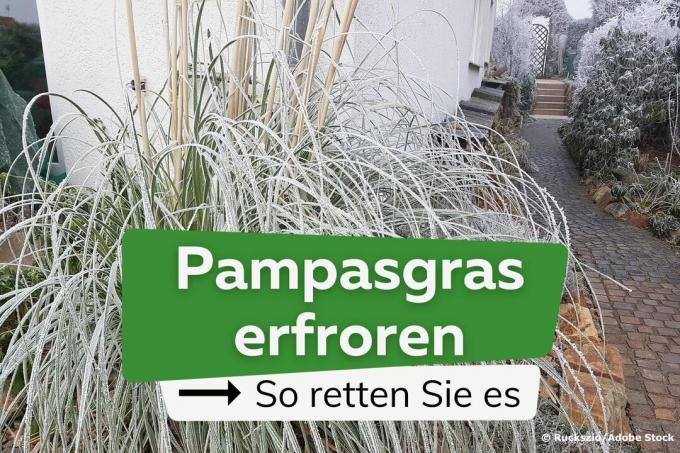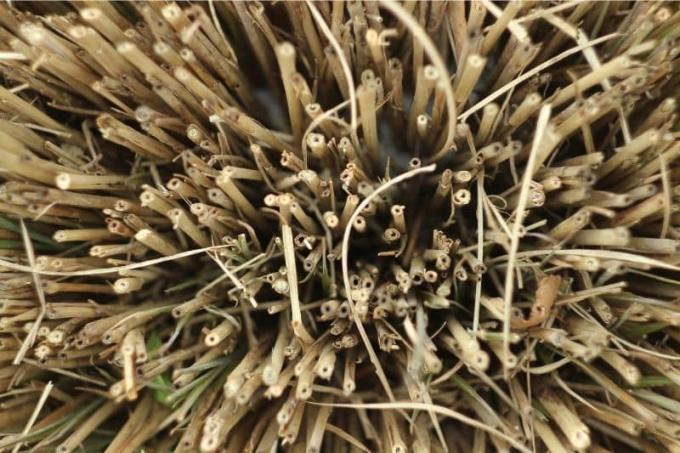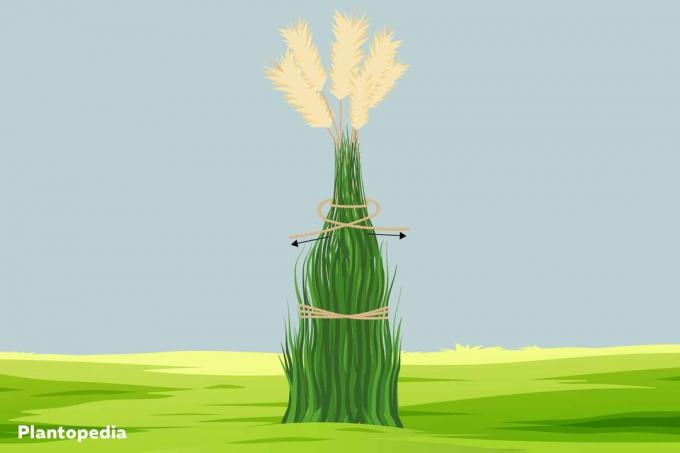
Spring is here, but the pampas grass doesn't want to take off. Maybe it was too cold for him. We'll tell you how to react correctly when the pampas grass freezes. This helps with frost damage.
In a nutshell
- hardy to -17.7 °C, frostbite only in harsh winters
- Rescue possible if green and vital root parts are present
- Dig up frost-damaged pampas grass, hibernate until the end of the frost
- in autumn as a preventative measure, tie stalks together, fill inside with leaves
- Overwinter pot specimens in a bright and cool place, alternatively wrap and cover
Table of contents
- Pampas grass hardy
- detect frost damage
- How to save pampas grass
- Winter protection in the garden bed
- Winter protection for pot specimens
- frequently asked Questions
Pampas grass hardy
As a rule, frost damage is rather rare, because pampas grass is assigned to hardiness zone 7:
- tolerates down to -17.7 °C (regardless of the sort)
- completely sufficient for most regions of Germany
- sheltered place and winter protection in harsher areas
A notice: Excessive wetness, which is regularly the order of the day here in autumn, causes this sweet grass greater problems. In permanently wet soil, the culms will eventually begin to rot at the narrow base, which will continue to the roots.
detect frost damage
During the frosty time of year, it is difficult to spot frostbite on pampas grass (Cortaderia selloana) just by examining the parts of the plant above ground. Because a few dried leaves in autumn and winter are normal.

Old specimens go, fresh green sprout from mid-May. If there is still no new growth on your specimen much later, while the old leaves have completely lost their green color, the frost damage is obvious. Much earlier, suspect that the pampas grass may have frozen, carefully dig it up. If all roots are sapless and dried up, the entire plant is gone. If some are still green and plump, the already robust grass will very likely sprout again.
How to save pampas grass
Even if part of the root ball survived the last frost, you cannot be given the all-clear. New frosts can come before the Ice Saints in May and the already weakened root ball can freeze completely. Keep the frozen pampas grass safe for this time.
- Put the root ball in a cloth bag
- for example in a jute sack
- store indoors until mid-May
- light and cool, but absolutely frost-free
- Plant out again after mid-May

Tip: For all maintenance work with the pampas grass, be sure to wear long-sleeved clothing and gloves to avoid cuts. Because the pampas grass has very sharp-edged leaves.
Winter protection in the garden bed
The time for taking shelter begins in the autumn immediately before the first frost and in April when the greatest danger of frost has finally passed. How to prevent frost damage to pampas grass:
- leave dried stalks as winter protection
- Gather all stalks into a tuft
- tie with a rope about every 40 cm
- fill the inside with leaves
- In addition, thickly mulch the root area with dry leaves/twigs
- Do not remove winter protection measures until mid-March/April
- occasionally water moderately on dry days

Tip: Only tie straws togetherthat are dry. If the current weather is rainy, wait for a few dry days. Otherwise there is a threat of exactly what should be prevented: rot!
Winter protection for pot specimens
A pot specimen is guaranteed not to tolerate -17.7 °C, as the root ball gets icy air all around. As a result, potted pampas grass is not safe from frost damage anywhere in Germany if it has to stay outside. Allowing him to stay in winter quarters should be your plan A. This must be bright, cool and frost-free. Watering now and then is enough. Plan B is done outside, giving the grass the best possible winter protection:
- Tie the tops of leaves together
- Wrap the pot with bubble wrap, jute, fleece or coconut mats
- Leave a gap for watering
- bring to a protected place, e.g. B. South wall under eaves
- place on wooden board or styrofoam

Tip: Occasionally water the grass in the winter quarters with a little water. Because the stems that are still intact evaporate water even on cold days, albeit less than in summer.
frequently asked Questions
In principle yes, but it is still better to leave the stems on the plant until spring. They are hollow on the inside and open towards the top after being cut off. Moisture can enter the openings and penetrate to the root base.
Give it a good portion of fertilizer just before new growth. An organic fertilizer such as mature compost is ideal.
While mature specimens can survive the frost to some extent on their own, young grasses are still too sensitive. They should be well protected from frost and moisture in the first years of life.



